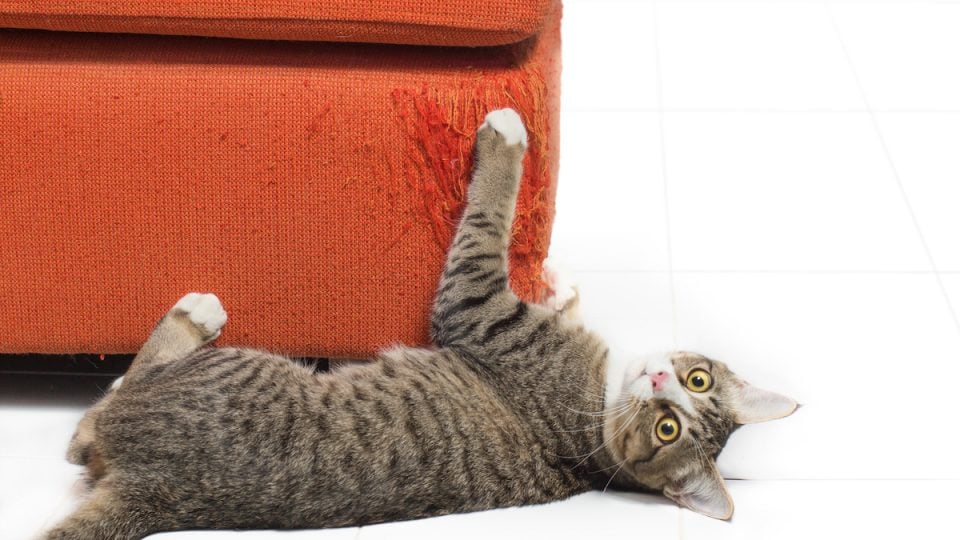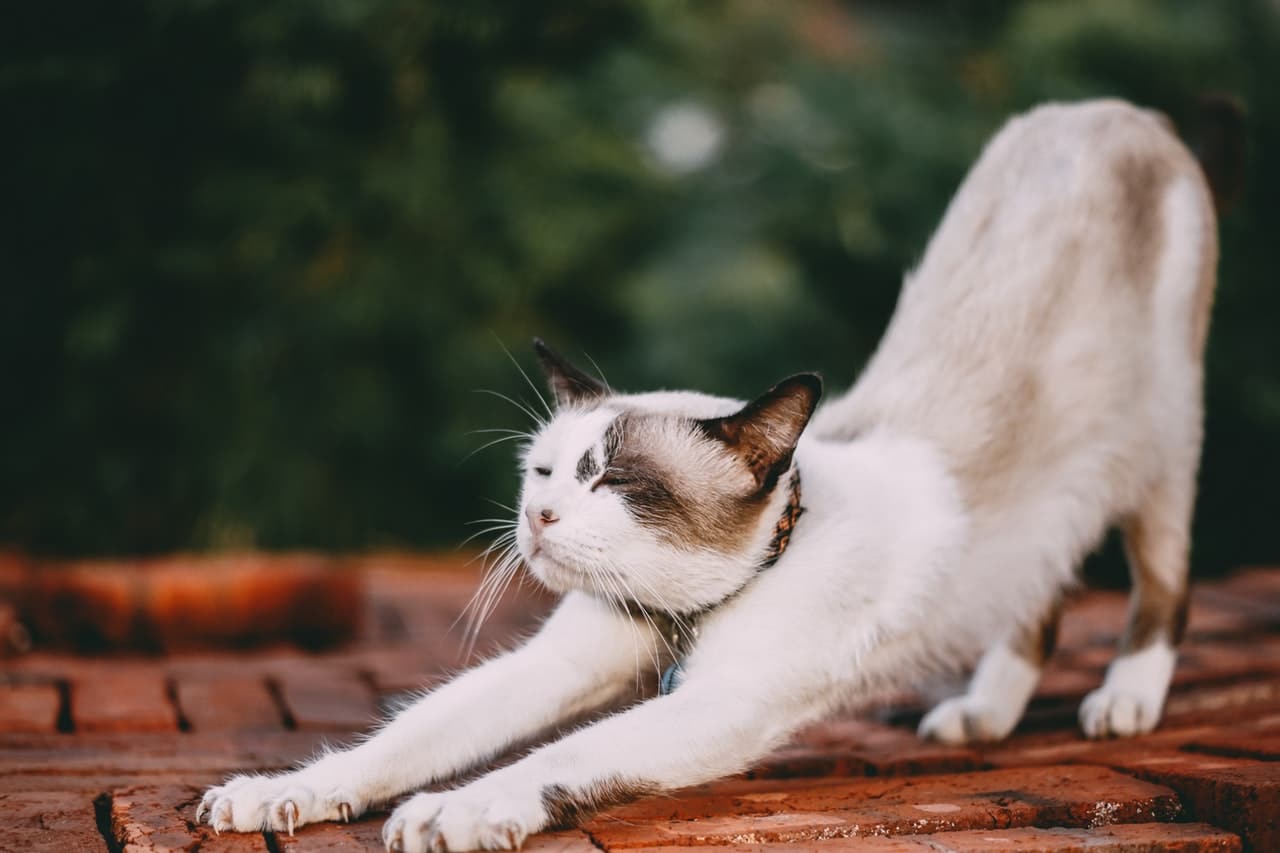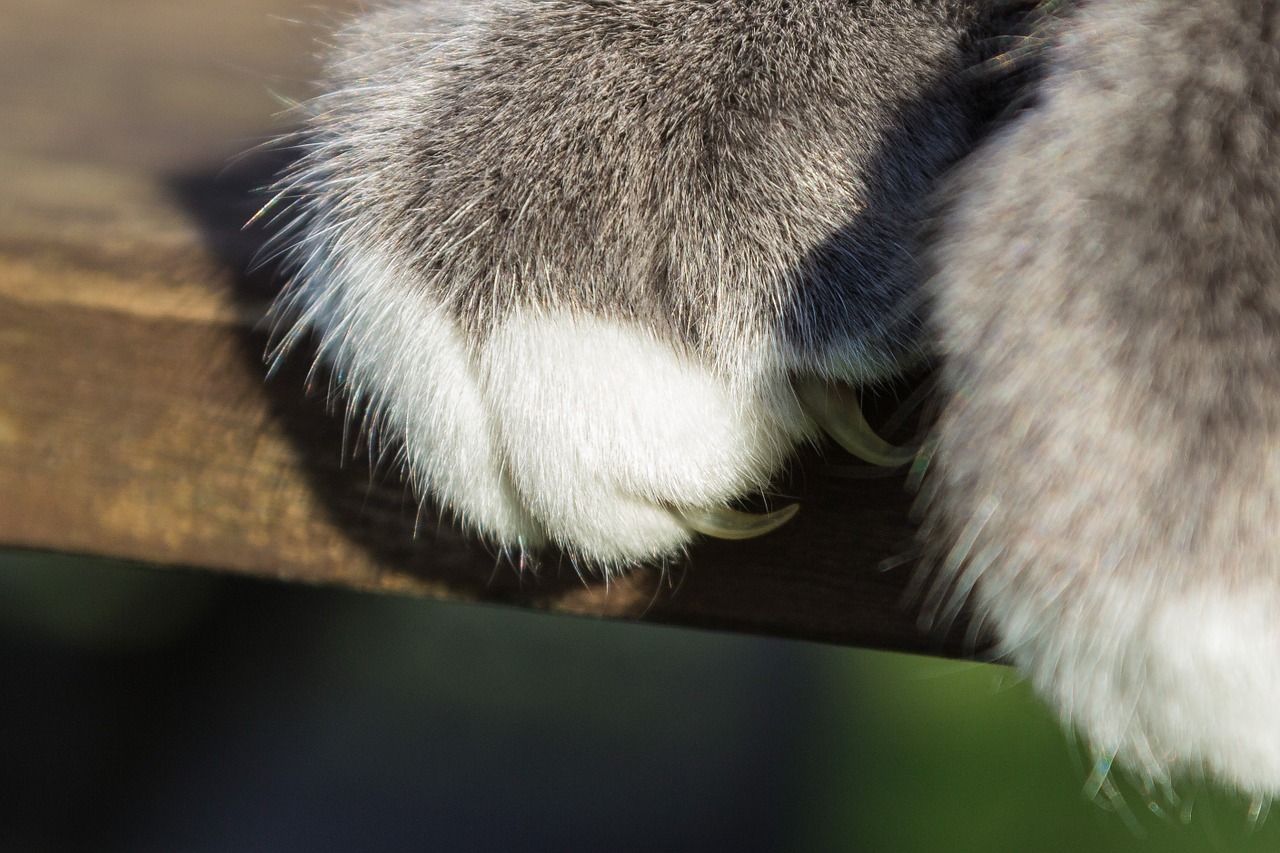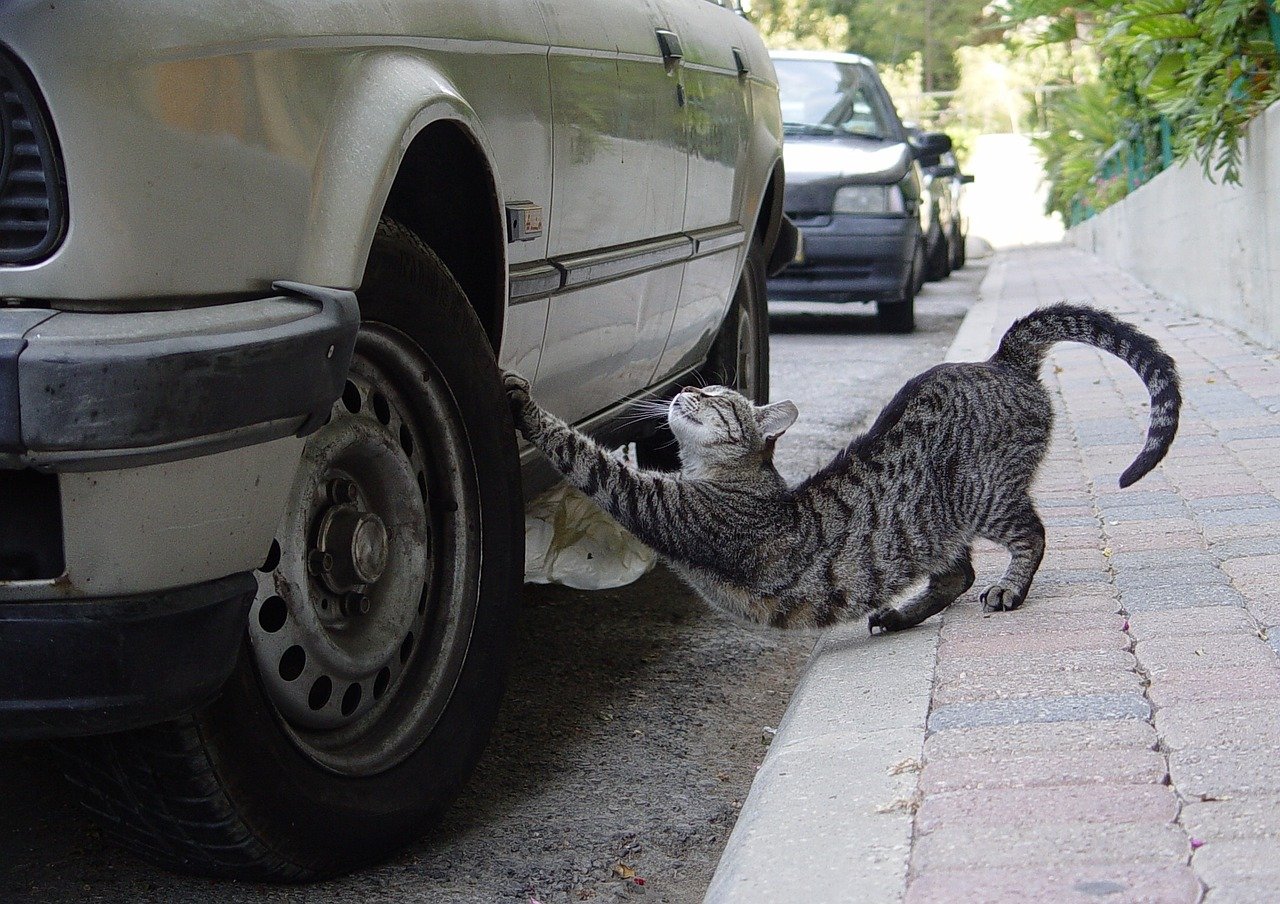Clawing is one of those cat behaviours we’re not particularly fond of, but the fact remains: it’s a natural behaviour that we can’t eliminate entirely (nor should we). That said, there are several approaches that cat owners can take to curb undesirable scratching.
Is your cat’s destructive scratching sending you to the brink of a breakdown? Here’s what you should know about why cats scratch, and what to do when they’re scratching the wrong spots in your home.
Why Cats Scratch
Believe it or not, cats don’t claw up your furniture out of spite. Let’s take a look at some of the reasons behind your cat’s clawing habits.
1. It’s all about claw maintenance
Cats scratch to remove the dead outer layer of their nails. According to the ASPCA, cats scratch to slough off the dull layer of their claws, exposing new nails underneath.
This explains why your cat prefers to scratch certain surfaces. In order to effectively remove their nails’ outer layer, cats need a rough surface that they can really dig their nails into. Pet stores are filled with carpeted scratching posts, but they’re not actually ideal for this purpose. Skip the carpeted products, and look for something rough and durable, like sisal rope.
2. They’re marking their territory
Did you know cats have scent glands on their paws? When they scratch things, they’re leaving both a visual and scented indication that this surface ‘belongs to them’.
3. It’s a workout
Clawing allows cats to get in some satisfying exercise. They scratch to flex their feet and stretch out their limbs.
4. It’s a form of play
Cats scratch to play and burn off excess energy. The Humane Society of the United States points out: “A kitten’s life is all about play, and play is all about prey.” They may be scratching you as a way to playfully hunt. That’s why it’s imperative to teach young kittens that rough play is simply unacceptable (more on that later).
What to Do When Your Cat Scratches Destructively
The goal here is not to eliminate your cat’s scratching completely, but rather to direct it to a more appropriate object. Remember: scratching is natural. It’s just your cat being a cat.
First things first: when it comes to behaviour modification, consistency is key. Make sure everyone in your household is on the same page.
Prevention for kittens
If you have a kitten, prevention is the best route. You can redirect this behaviour while they’re still young so they’ll maintain these good habits into adulthood.
This article in Modern Cat suggests engaging in a minimum of 10 minutes of active playtime and exercise per day to burn off extra energy, noting that “senior cats may like longer but less intense sessions.” And you should never let your kitten bite or scratch your skin—you don’t want to teach him that your hands and feet are playthings! Instead, use a fishing pole toy or toss toys to him to keep distance between your kitten’s claws and your skin.
No-scratch options for adult cats
If you have an adult cat, there are still ways to deal with destructive scratching. Here are a few effective options.
1. This may seem like a no-brainer, but you need to clip your cats’ nails regularly. A weekly trimming is ideal to minimise the damage they can do.
2. If your cat scratches during play, stop playtime immediately and leave the room. Don’t give him any attention, otherwise, he’ll think you’re rewarding his behaviour.
3. Since a cat’s urge to scratch is largely dependent on texture, covering objects with unpleasant materials is a surefire way to discourage destructive clawing. Cover furniture and drapes with sticky double-sided tape. Sandpaper, aluminium foil, and plastic are also good choices.
4. Use your cat’s senses of taste and smell to discourage scratching. Most cats dislike the smell of citrus and menthol, so covering inappropriate surfaces with these scents can deter scratching.
5. Try using nail caps to protect your furniture. Designed to minimise the damage inflicted by sharp claws, nail caps are tiny plastic covers that you glue over your cat’s nails. They’re inexpensive, you can apply them at home, and they last between four to six weeks.
6. Scratching posts are a must! Remember, scratching is a natural cat behaviour—one that you can’t stop completely. Redirecting this biological urge to claw towards an appropriate surface is the best way to go.
Choosing a Scratching Post For Your Cat
Don’t shop for scratching posts based on aesthetic preferences alone. Your cat needs something sturdy and rough to satisfy his scratching drive. Keep in mind that all cats are different, and they have individual preferences when it comes to scratching. Try a variety of materials—wood, cardboard, rope—to learn what he likes. It may take a bit of trial and error, but it’s worth the effort.
We know scratching posts aren’t the most aesthetically pleasing pieces of furniture, but try to resist the urge to hide them in an underused corner of your home. Instead, place posts next to the undesirable surface your cat is drawn to.
Tips on encouraging your cat to use their scratching post include:
- Rub catnip all over the scratching post to make it more appealing, or dangle a toy mouse to attract your cat’s attention.
- Reward good behaviour with treats. When he uses his scratching post, show your cat your approval with their favourite snack—they deserve it!
- You can even try scratching the pole yourself to show him how much fun it is!
What Not to Do If Your Cat Is Scratching
Negative punishment is never the answer. It’s important to never physically punish your cat. This will only teach him to fear you, damaging your relationship in the process.
Other things to avoid include:
- Physical force. The ASPCA maintains that forcing your cat to drag his claws on his post will only frighten him and teach him to avoid the post entirely.
- Discarding worn-out scratching posts. Even if they’ve become unsightly, the used posts will still be effective because of their familiarity.
- Declawing. This is illegal in the UK. There are more humane and equally effective alternatives.
As cat lovers, we don’t need to live with damaged furniture or battered skin. With consistency, patience, and a good scratching post, you can successfully modify your cat’s clawing behaviour.








